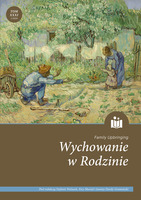Przestrzeń pogranicza kulturowego: granice, uwspólnianie światów, tożsamościowe i ojczyźniane konotacje
Cultural borderlands: borders, commonality of worlds, identity, and homeland connotations
Author(s): Alicja SzerlągSubject(s): Sociology of Culture
Published by: Zakład Historii Edukacji w Instytucie Pedagogiki Uniwersytetu Wrocławskiego
Keywords: borders; cultural borderland; borderland order; socio-cultural space; identity; homeland;
Summary/Abstract: Introduction. One of the phenomena of contemporary multiculturalism is the constitution of a cultural borderland, marked by a multitude of constantly revealed and created internal (social) borders, which are characterised by overdetermination, polysemy, heterogeneity, and omnipresence. In this context, the process of commonality of worlds in the space of a cultural borderland, resulting in the construction of the order of this borderland, appears cognitively interesting. In the case of a cultural borderland in particular, we are dealing with a multiplicity of identities defined and realised to different extents. This, in turn, has an impact on the degree of distinctness of borders in social consciousness. As a result, the borderland appears as a dynamically interactive and discursive, multi-scalar place of pro- ximity. In this regard, the national, socio-cultural, and intercultural contexts of this process are of paramount importance. Aim. The object of the study is to provide an insight into the cultural borderland from a constructionist perspective, enabling the disclosure of its identity-related and homeland connotations, resulting from identifications taking place in the cultural borderland. Methods and materials. Critical subject literature review. Results and conclusions The analysis revealed there are areas in which a multidimen- sional identity is constructed, embracing national, familial, state, transnational, and com- munal provenances. In its essence, such identity orientates towards the homeland space, which, in the cultural borderland, has an increasingly symbolic value and meaning andbecomes a ‘place’ where familiarity dominates over strangeness. As a result, the perceived homeland also takes on a multidimensional form, as the family homeland, the national homeland, and the small homeland are revealed. In the “borderland” person’s awareness and everyday life, these homelands can dominate each other individually or interpenetrate each other, creating a multifaceted homeland space.
Journal: Wychowanie w Rodzinie
- Issue Year: XXXI/2024
- Issue No: 1
- Page Range: 13-30
- Page Count: 18
- Language: Polish

